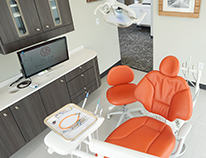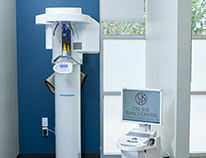
This reality means there is a practical limit to how much they can afford to spend to buy (into) a practice. The typical new dentist today can’t afford to buy outright any practice worth
more than about $400,000. That would mean a $4,440 monthly payment over 10 years at 6 percent.
If you have a million dollar practice, or any practice with annual revenues greater than about $650,000, who is going to buy it? The practice value you have worked so hard to create could
very well be lost when you try to sell at the end of your career unless you capture it through a value transition. By the same token, any new dentist who is ambitious and wants to establish
himself in a highly productive, leading edge practice needs to be looking at value transitions.
TRANSITION SIGN #2: SATURATION
The most limiting factor to the growth of any practice is your time. After a certain point, you become too busy to keep up with the needs of all your patients. Take a look at this example:
NO. OF HYGIENISTS: 2
NO. OF HOURS WORKED: Four 8-hour days/week TOTAL AVAILABLE HYGIENE HOURS PER YEAR: 3,072 NO. OF HOURS OF HYGIENE TIME REQUIRED PER PATIENT: 1.5 hours per year (2 appointments/year at 45 minutes per appointment) LIMIT TO PRACTICE GROWTH: 2,048 patients
If the maximum number of active patients your practice can handle is 2,048, then beyond that point, for every new patient you receive, one is walking out the back door because you can’t
handle the volume!
Once you are saturated, every new/lost patient is a daily reminder that your practice’s opportunities for growth are being limited. In practices that choose to have fewer than two
hygienists, saturation comes even sooner.
The solution? Another provider to support the practice’s hygiene team and capture the value that is otherwise slipping away.
TRANSITION SIGN #3: FREEDOM
Even before the point of saturation, many doctors make choices about the direction of their practice that reduce its value. Usually, their choices are about creating more freedom in their
lives.
Freedom can be in the form of:
How can doctors reduce their time but still provide the same level and access to care for their patients? How can doctors prioritize the type of cases they work on but still ensure
existing patients’ everyday needs are being treated? In both cases, a value transition that allows another provider to come into the practice and build productivity from the excess ensures
the responsible transfer of care and value.
PULLING IT ALL TOGETHER
Done right, a value transition can occur at any time in practice. It cannot be overemphasized that this is a strategy for capturing value, increasing practice growth and practice
development, not just an exit plan for retirement.
Even for retiring doctors, a value transition creates a structured approach to stepping down that has many advantages including team and patient continuity, and economic benefits that far
outweigh the return from a brokered sale.
This is not to say that there is no place for brokered practice sales. In some cases, this could well be the most appropriate approach for a retiring doctor. But a value transition should
always be investigated for potentially higher benefits.
For dentists who want to capture the full value of their practice, a value transition demands investigation. It is not about retirement. It’s about ensuring that the value of the practice
is never so low that no one wants it and never so high that no one can afford it. It’s about keeping the practice in a dynamic phase of growth and success for your entire career!
Best of all, once your future is secure, the real pleasure of practicing dentistry becomes your daily experience. You don’t work because you have to; you work because you want to. And what
can have higher value than that?
Mercer Transitions is dedicated to improving practice success for dentists – enhancing the patient experience and practice lifestyle – through the revolutionary OnTrack system, dental
practice transition planning, or both. Our results are proven, and our passion will inspire you. Mercer Transitions offers comprehensive practice transition planning services to support dentists at any appropriate point of their careers – practice transition is not just an exit strategy, it can be a practice growth strategy at any age! In providing these services for thousands of clients over more than 20 years, Mercer Transitions has a reputation for excellence.
For a complimentary initial one-hour phone consultation, contact Mike Elster, National Manager, Mercer Transitions–Patterson Dental, at 800.444.6162 or practicetransitions@pattersondental.com.
|
|
|
|
© 2025 Patterson Dental. All rights reserved.















 PRINT
PRINT SHARE
SHARE